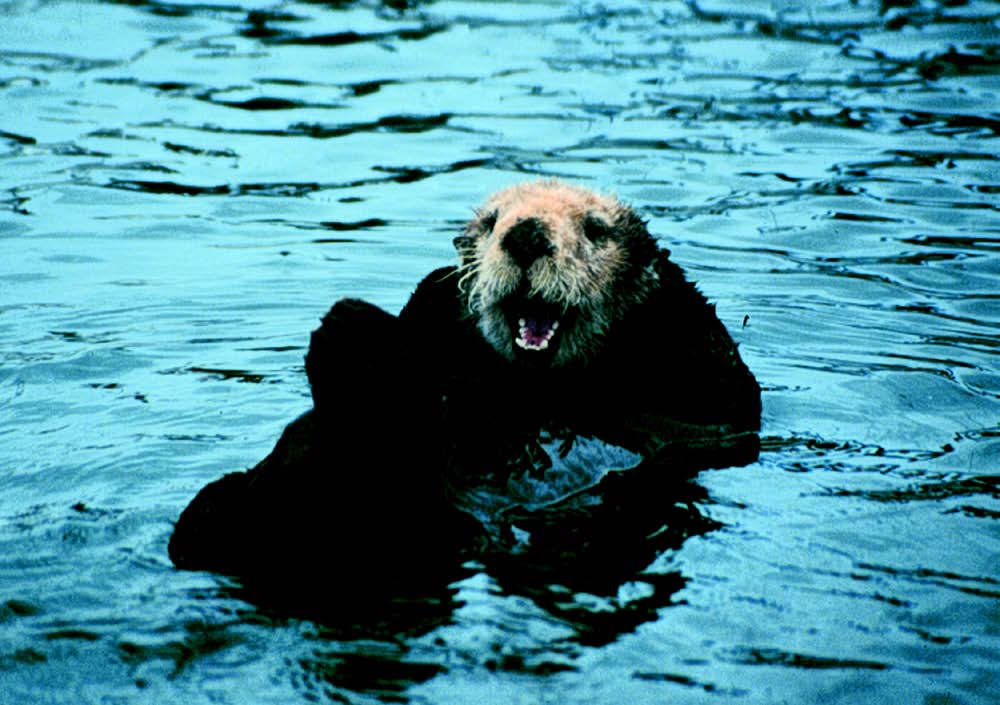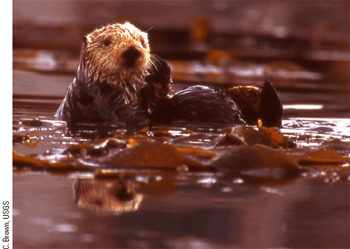- Home
- About S&T
- Taxa/Organisms
- Ecosystems
- Issues
- Methods & Tools
- Reports & Publications
- Location
- Search
2006 | Publisher: USGS | Science Center: Fort Collins Science Center (FORT, Ft. Collins) | Format: URL
www.fort.usgs.gov — Although the monitoring of black-footed ferret (Mustela nigripes) populations following reintroductions has not been haphazard, several ferret recovery groups since 1994 have recommended development of uniform standards prescribing minimum methods, intensities, and frequencies of monitoring that would provide data on population size, mortality More...

May 2005 | Publisher: USGS | Science Center: National Wildlife Health Center (NWHC, Madison) | Format: .PDF
www.nwhc.usgs.gov — Recent increases in the frequency and variety of infectious diseases in the southern sea otter may jeopardize the population recovery of this threatened species. This information sheet includes a list of selected publications.

1999 | Publisher: USGS | Science Center: Fort Collins Science Center (FORT, Ft. Collins) | Format: URL
www.fort.usgs.gov — A quasi-experimental situation exists in Rocky Mountain National Park, where elk (Cervus elaphus) populations have increased 3-fold since 1968 following their release from artificial controls within the park. Increases in elk habitat use and decreases in deer habitat use were observed. Significant increases in cover of mosses and lichens occurred More...

Publisher: USGS | Science Center: Fort Collins Science Center (FORT, Ft. Collins) | Format: URL
www.fort.usgs.gov — In 1995, the Fort Collins Science Center, Biological Resources Discipline, United States Geological Survey initiated a cooperative study with the National Park Service to study the bats of Jewel Cave National Monument. The major goals of this project were to define distribution patterns and roosting habits of bats in the area. One of the More...

Publisher: USGS | Science Center: Fort Collins Science Center (FORT, Ft. Collins) | Format: URL
www.fort.usgs.gov — This site is in part a hybridization of two of the most popular pre-existing sites about the wild horse research. Three research and development tasks are featured, which are counting wild horses and burros by combining and field-testing aerial survey techniques (this work assists the BLM in obtaining more accurate population estimates, on which More...

Publisher: USGS | Science Center: Columbia Environmental Research Center (CERC, Columbia) | Format: URL
www.cerc.usgs.gov — Significant modification of aquatic ecosystems has occurred on the 294 km 2 Kabetogama Peninsula in Voyageurs National Park where beaver activity has transformed more than 300 km of existing stream channels. The fundamental goal of this research will be to assess the critical role that regional and local environmental boundaries might play in More...

Publisher: USGS | Science Center: Forest and Rangeland Ecosystem Science Center (FRESC, Corvallis) | Format: URL
fresc.usgs.gov — This project addresses one of the Bureau of Land Management's key research needs: Understanding the influence of grazing on the integrity of biotic soil crusts in semiarid rangelands. Grazing is planned to resume on parts of the Horse Heaven Hills near Richland, Washington based upon an Environmental Assessment (EA) by the Spokane District office More...

Publisher: USGS | Science Center: Forest and Rangeland Ecosystem Science Center (FRESC, Corvallis) | Format: URL
fresc.usgs.gov — The river otter (Lontra canadensis) is a top predator of most aquatic food chains. The goal of this study is to further evaluate the relationship among the contaminants and observed reproductive organ hypoplasia in young male river otters, their occurrence, and mode of action or mechanism that causes hypoplasia with a larger series of data from More...

Publisher: USGS | Science Center: Western Ecological Research Center (WERC, Sacramento) | Format: URL
www.werc.usgs.gov — Sea otters (Enhydra lutris) are keystone predators in the nearshore environment of the eastern Pacific Ocean, in a food web composed of sea otter, sea urchin, and kelp forest. Without sea otters, the kelp forest can be overgrazed by sea urchins, which in turn can affect other species that depend on this ecosystem. This resource provides links to More...

Publisher: USGS | Science Center: Columbia Environmental Research Center (CERC, Columbia) | Format: URL
www.cerc.usgs.gov — The BFRS works cooperatively with team members from CERC and with faculty and graduate students of Department of Wildlife and Fisheries Sciences at Texas A&M University in research areas represented by the branch structure of the CERC including toxicology, ecology, biochemistry and physiology, environmental chemistry, ecogeography, and information More...

Publisher: USGS | Science Center: Upper Midwest Environmental Sciences Center (UMESC, LaCrosse) | Format: URL
www.umesc.usgs.gov — The moose population in northwestern Minnesota has been declining for over 25 years. The U.S. Fish and Wildlife Service has identified a need to determine whether the moose decline is a result of nutrition, parasites, disease, contaminants, or a combination of those factors. In an attempt to determine the cause of death for moose in northwestern More...

Publisher: USGS | Science Center: National Wildlife Health Center (NWHC, Madison) | Format: URL
www.nwhc.usgs.gov — The ongoing pandemic of Foot-and-Mouth Disease (FMD) in Europe and other parts of the world is of great concern to the North American Agriculture Community. FMD may also pose a significant threat to North American wildlife, including white-tailed deer, other deer species, feral pigs, bison, moose, antelope, peccaries, musk ox, caribou, sheep and More...
